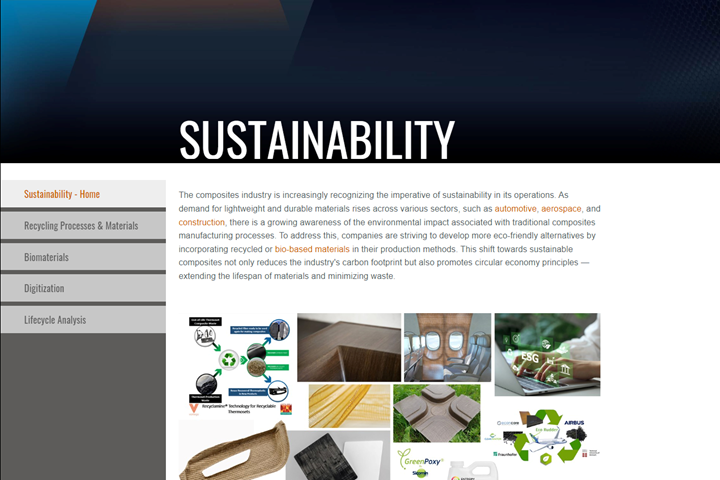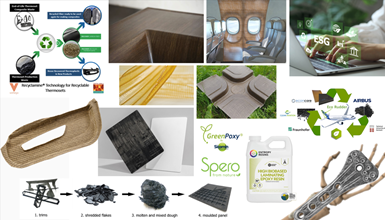New CW microsite recognizes the importance of sustainability in composites manufacturing
To better organize and address the topic of sustainability, CW has curated this content into a focused digital hub for readership.

Photo Credit: CW
The composites sector acknowledges the vital importance of sustainability within its operations. As the need for lightweight and long-lasting materials continues to surge in industries like automotive, aerospace and construction, there’s a growing recognition of the environmental consequences linked to conventional composites manufacturing techniques and material developments.

In response to this concern, companies are actively working to create greener alternatives and more environmentally conscious solutions, whether that’s by integrating recycled or bio-derived content into developed components and structures, establishing/using new tools to track a facility’s carbon footprint, laying the foundation for recycling capabilities or simply fostering sustainable innovation. This transition towards a more eco-conscious industry not only diminishes its environmental impact but also champions the principles of a circular economy by elongating material lifespan and reducing waste.
With sustainability becoming a rising hot topic, we at CW have taken it upon ourselves to organize our sustainability-based content into an organized digital hub for readers via a new sustainability microsite. Some key topics we filter this content into:
- Recycling Processes & Materials: There has been a growing emphasis on finding ways to recycle composite materials and products. This includes developing processes to recover and repurpose composite materials, reducing waste and extending the lifespan of composites.
- Biomaterials: Researchers and manufacturers have been working to develop more environmentally friendly resins and reinforcement materials, such as bio-based resins and recycled fibers.
- Digitization: Digitization in composites manufacturing refers to the integration of digital technologies and data-driven processes into various stages of the composites production and supply chain. This transformation has the potential to improve efficiency, quality, and sustainability in the manufacturing of composite materials and products.
- Lifecycle Analysis: Assessing the environmental impact of composites throughout their entire lifecycle has gained importance. This involves considering factors like raw material extraction, manufacturing, transportation, product use and end-of-life disposal.
Take a look and stay up-to-date with what’s new and what’s coming in sustainability, as it pertains to the composites industry.
Related Content
-
Bio-based acrylonitrile for carbon fiber manufacture
The quest for a sustainable source of acrylonitrile for carbon fiber manufacture has made the leap from the lab to the market.
-
Microwave heating for more sustainable carbon fiber
Skeptics say it won’t work — Osaka-based Microwave Chemical Co. says it already has — and continues to advance its simulation-based technology to slash energy use and emissions in manufacturing.
-
Plant tour: Daher Shap’in TechCenter and composites production plant, Saint-Aignan-de-Grandlieu, France
Co-located R&D and production advance OOA thermosets, thermoplastics, welding, recycling and digital technologies for faster processing and certification of lighter, more sustainable composites.













